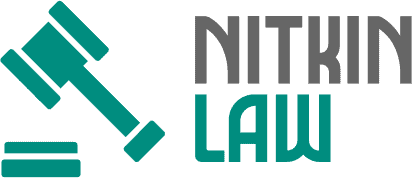Table of Contents
- Understanding Medicare and Medicaid Fraud
- Common Types of Medicare and Medicaid Fraud
- Impact of Fraud on Healthcare Systems
- Methods of Detecting Fraud
- Prevention Strategies for Reducing Fraud
- Legal Aspects and Whistleblower Protections
- Real-Life Case Studies
- Summary and Key Takeaways

Understanding Medicare and Medicaid Fraud
Medicare and Medicaid fraud involves illegal practices aimed at obtaining unwarranted benefits from these healthcare programs. This can range from overbilling to outright falsification of medical records. The consequences are far-reaching, affecting taxpayers, the healthcare system, and most notably, patient care. Fraud can occur in various forms, involving numerous stakeholders, including healthcare providers, patients, and even government officials. It is crucial to recognize the complexity and prevalence of these practices to ensure that the system remains efficient and reliable. To delve deeper into what is Medicare fraud, it’s essential to examine different aspects and intricacies of these fraudulent activities.
Common Types of Medicare and Medicaid Fraud
- Billing for services not rendered
- Upcoding or misrepresenting services provided
- Kickbacks and illegal referrals
- Fraudulent enrollment or eligibility claims
These fraudulent activities not only defraud the government but can also compromise patient care quality and safety. For instance, upcoding involves billing for a more severe diagnosis or more expensive service than what was actually provided, leading to unnecessary treatments. In some cases, providers may bill for services or equipment never provided, while others might misrepresent the nature of the services rendered to receive higher reimbursement rates. These practices not only inflate costs but also undermine trust in the healthcare system.
Impact of Fraud on Healthcare Systems
Fraudulent activities can severely strain healthcare systems, inflate costs for taxpayers, and erode public trust. According to estimates, fraud costs billions of dollars a year, which highlights the necessity for effective detection and prevention techniques. The impact is felt at multiple levels, from funds being siphoned away from necessary services to increased premiums for insurance holders. Additionally, resources allocated to combat fraud are drawn away from other critical areas, further exacerbating the problem. The ripple effect of fraud causes extensive damage, underscoring the necessity for vigilant oversight and stringent enforcement.
Methods of Detecting Fraud
Detecting fraud often involves a combination of audits, data analytics, and reporting mechanisms. With advancements in technology, machine learning algorithms now play a crucial role in identifying suspicious patterns quickly. Healthcare institutions and governments alike rely on these technologies to keep a step ahead of fraudulent claims. Continual monitoring and regular audits help identify unusual patterns or anomalies in billing and service records. These technical instruments greatly improve the capacity to identify and stop fraudulent activity when paired with human control.
For more detailed insights, you can refer to the latest reports from the Department of Justice. These resources provide valuable information on newly detected fraud schemes and the legal actions taken against the perpetrators. They also highlight the importance of ongoing vigilance and the role of whistleblowers in exposing fraudulent practices, encouraging a proactive approach to fraud detection.
Prevention Strategies for Reducing Fraud
- Education and Training: Ensuring that healthcare providers and staff are well-versed in the legalities and best practices.
- Robust Audits: Regular and thorough audits can deter fraudulent activities.
- Compliance Programs: Implementing strict compliance programs that mandate ethical behavior.
- Technological Solutions: Utilizing advanced software to monitor transactions and identify red flags.
Furthermore, collaborations between the public and commercial sectors can strengthen efforts to avoid. By exchanging information, fraudsters can be identified more quickly and with greater thoroughness. Community outreach programs also play a role in educating the public about the importance of reporting suspicious activities. Prevention is a multifaceted approach requiring the collaboration of medical professionals, legal experts, and the public to create a secure and fraud-resistant healthcare environment.
Legal Aspects and Whistleblower Protections
The legal landscape surrounding Medicare and Medicaid fraud is intricate. There are stringent penalties for those caught, including hefty fines and jail time. Whistleblower protections are established to encourage reporting without fear of retaliation. These laws are designed to shield those who expose fraudulent activities from being fired or otherwise penalized. Whistleblowers are often essential in uncovering complex fraud schemes, and their protection is critical to maintaining the integrity of fraud detection efforts.
For example, the False Claims Act enables whistleblowers to sue on behalf of the government and share in any recovered damages. This not only incentivizes reporting but also amplifies enforcement actions against wrongdoers. The legal framework, combined with supportive policies, ensures that individuals who come forward with information on fraud can do so without fear of retribution, thereby strengthening the overall fight against fraud.
Real-Life Case Studies
Examining actual instances of fraud can provide invaluable lessons. For example, a notable case involved a healthcare provider who was caught filing claims for non-existent patients, which led to a multi-million dollar settlement and strengthened oversight procedures within the institution. Such case studies highlight the importance of vigilance and robust internal controls. Each case study also serves as a reminder of the potential risks and showcases different methods used by fraudsters to exploit the system.
Other cases include schemes where medical equipment suppliers billed for items never delivered, showcasing the diversity of fraud tactics and the need for comprehensive preventive measures. These cases underline not just the ingenuity of fraudsters but also the necessity for dynamic and adaptable detection and prevention strategies. Real-life examples help illustrate the practical application of theoretical knowledge and the efficacy of various methods when implemented correctly.
Summary and Key Takeaways
Medicare and Medicaid fraud is a significant issue that demands attention from all stakeholders involved in the healthcare system. By understanding the types of fraud and their impact on the system and by employing rigorous detection and prevention strategies, we can work towards mitigating these unlawful activities. Education, technology, and stringent legal frameworks are key to effective fraud management. The combined efforts of healthcare providers, legal authorities, and technological advancements play a pivotal role in maintaining the integrity of Medicare and Medicaid services.
By fostering a culture of transparency and accountability, we can better safeguard the integrity of Medicare and Medicaid programs for future generations. Continuous education and awareness, along with upgraded technological solutions, will ensure that fraudulent activities are promptly identified and addressed. The battle against fraud is ongoing, and sustained efforts are essential to protect the valuable resources allocated for public health.

